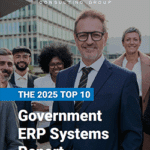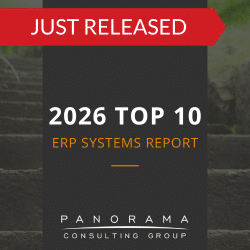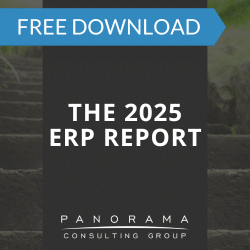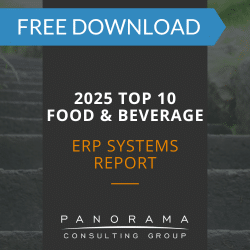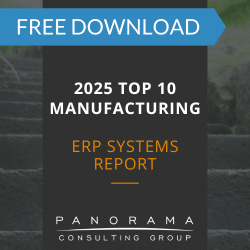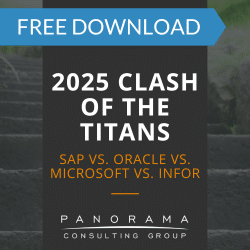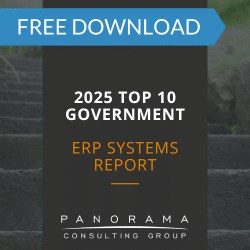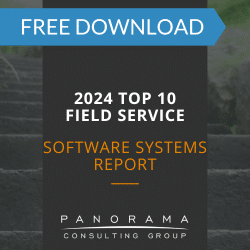- MRP software trends in 2025 reflect a shift toward real-time data, cloud-native platforms, and embedded AI planning tools.
- The future of MRP software is defined by interoperability, demand-driven logic, and multi-site coordination.
- Digital transformation in manufacturing depends on MRP systems that align materials planning with live production constraints.
- Manufacturers are replacing static, forecast-based MRP with adaptive systems that respond dynamically to supply chain variability.
Modern manufacturing strategy is shifting as production teams adopt new ways of planning materials, aligning operations, and responding to real-world constraints.
At the center of that shift? Modern MRP software.
We’re seeing a departure from rigid, batch-driven planning systems toward more integrated, adaptive, and intelligent platforms. Today’s MRP systems drive real-time coordination across procurement, production, and inventory—turning planning from a static schedule into a dynamic response system.
In this post, we’ll examine the most consequential MRP software trends, explore the future of MRP software in light of current shifts, and connect those trends to broader digital transformation in manufacturing.
2025 Top 10 Manufacturing ERP Systems Report
Are you a mid- to large-sized manufacturing firm? This report is for you. Download it now to learn what kind of advanced functionality is available in the market today.
Top Trends Redefining MRP Software in 2025
The term “MRP” (Material Requirements Planning) has traditionally conjured visions of spreadsheets, fixed lead times, and nightly batch runs.
The reality in 2025 is very different—and growing more so by the day.
Here are six trends shaping the future of MRP software:
1. Cloud-Native Architecture Is Now the Default—And It’s Changing the Upgrade Game
Most leading MRP software vendors now deliver cloud-first or cloud-only offerings. For manufacturers, this means:
- Continuous updates rather than disruptive, years-apart upgrades.
- Improved scalability, especially for multi-plant operations.
However, executives should recognize the tradeoff: with cloud software systems, you’re buying into the vendor’s roadmap. This means customizations may be harder to maintain, and you’ll be dependent on the vendor for rollout timelines and feature prioritization.
Our MRP consulting team often advises clients to map out the vendor’s release cadence and ask detailed questions about how roadmap decisions are made and how user feedback gets prioritized in future functionality.
2. Demand-Driven MRP Is Moving from Theory to Practice
Demand-Driven MRP (DDMRP) models reverse that approach by buffering strategic inventory points and using real-time demand signals.
What this means:
- Planners have better visibility into variability.
- Inventory holding costs drop without sacrificing service levels.
- Manufacturing becomes more responsive and resilient.
However, these gains don’t materialize without process discipline. Adopting demand-driven MRP requires a clear understanding of how planners make decisions and how data flows between procurement, inventory, and production.
3. AI and Predictive Analytics Are Embedded in Planning Workflows
The top manufacturing ERP systems include MRP modules that use artificial intelligence (AI) to identify planning anomalies and suggest adjustments based on historical performance trends.
Similarly, many standalone MRP systems use machine learning to:
- Flag potential stockouts before they disrupt production.
- Optimize batch sizes dynamically.
The practical value is significant, but only if your master data is clean and your teams understand how to interpret AI’s suggestions.
Our generative AI consulting team always tells clients that AI will amplify good planning—but it will accelerate bad assumptions just as fast. You need tight data governance and planner accountability in place before turning the algorithm loose.
4. Real-Time Integration with Shop Floor Systems Is the New Norm
That’s becoming unsustainable. The future of MRP software depends on seamless integration with:
- MES (Manufacturing Execution Systems)
- IoT sensors on the shop floor
- Quality management platforms
The result? Planners no longer wait for end-of-shift summaries. Material planning reflects actual cycle times, downtime events, and quality rejects as they happen.
The challenge is that many manufacturers lack a clear integration architecture or rely on brittle middleware. Investing in interoperability is now a strategic priority.
For example, a food and beverage manufacturer might integrate its MRP system with shop floor sensors and quality checkpoints. When a batch fails inspection or a machine goes down, the system would automatically adjust material plans—preventing overproduction and reducing spoilage without relying on manual updates.
5. Multi-Entity Coordination Is a Core Use Case—Not a Niche Feature
- Intercompany transfers
- Shared raw material forecasts
- Consolidated reporting across plants or subsidiaries
Modern MRP platforms are built to support these complexities. However, configuration is everything. Cross-entity alignment often exposes inconsistencies in part naming, BOM structure, and lead time assumptions—requiring disciplined master data governance.
6. User-Centered Design Has Finally Reached the MRP World
- Configurable dashboards for planners.
- In-app guidance for less experienced users.
- Mobile-friendly interfaces for plant-level visibility.
Why it matters: expanding access to MRP data reduces bottlenecks, improves cross-functional coordination, and helps turn material planning into a more strategic function.
However, ease of use doesn’t remove the need for user accountability. Workarounds—like skipping exception messages or overriding system logic—can still undermine outcomes.
What This Means for Manufacturing Executives
The strategic role of MRP is changing. Here are four implications that executive teams must grapple with as part of digital transformation in manufacturing.
1. MRP Is No Longer Just a Planning Tool—It’s a Coordination Engine
The future of MRP software lies in eliminating handoffs between systems and surfacing decision-critical data at the moment it’s needed.
As MRP platforms integrate deeper into quality, logistics, and production, they become the central nervous system of your operation. Misalignments here ripple across departments.
Executives should ask:
- How well does our current MRP system reflect actual constraints on the floor?
- Is our material plan driving cross-functional coordination or creating more reconciliation work?
2. MRP Strategy Must Evolve Alongside Business Complexity
Signs that complexity has outpaced your system include:
- Frequent manual overrides to planned orders.
- High planner effort to maintain accuracy.
- Excess inventory in some locations, shortages in others.
In these cases, redesigning your MRP approach can help you restore operational alignment.
For example, a manufacturer expanding into contract manufacturing might shift from site-level planning to centralized multi-site MRP, enabling shared forecasting and coordinated procurement across facilities.
3. Independent Software Selection Is More Critical Than Ever
Many ERP vendors bundle MRP modules into their suites, but not all MRP tools are created equal—and many were built for simpler manufacturing models.
Manufacturers should:
- Define functional requirements grounded in real-world use cases.
- Pressure-test MRP capabilities in scenarios that reflect variability, exception handling, and integration needs.
Working with an independent ERP selection consultant (a firm that doesn’t have any financial ties, partnerships, or incentives linked to specific vendors) ensures your chosen solution fits your business—not just your licensing bundle.
4. Implementation Success Hinges on Change Leadership
Whether you’re rolling out a new MRP platform or modernizing an existing one, the core failure point isn’t usually technical—it’s human.
Resistance from planners, procurement, and production leaders can stall or distort even the best-designed solution.
Executives must:
- Involve end-users early in the process, especially during vendor demos and testing.
- Provide context for how MRP modernization connects to broader business goals.
- Reinforce accountability with clear ownership and training plans.
Learn More About Digital Transformation in Manufacturing
The future of MRP software is being shaped by how manufacturers respond to growing complexity, rising customer expectations, and tighter margins.
We help companies of all sizes navigate digital transformation in manufacturing using our unbiased approach to evaluate both MRP modules and standalone MRP systems. Contact our ERP selection consultants to learn more.


